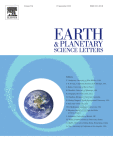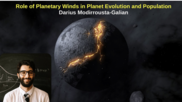February 2024
https://www.science.org/doi/epdf/10.1126/science.adh4893
Ellen Thomas
August 2023
Ellen Thomas
Widespread oceanic deoxygenation occurred during the Paleocene/Eocene Thermal Maximum (PETM), but its exact timing and regional variability remains poorly understood. We use magnetofossils at two IODP sites in the NW Atlantic ocean (paleodepth ~ 2900, 4400 m) to trace regional palaeoredox changes. Deep-sea oxygenation started to decrease gradually several hundred thousand years before the PETM, and reached a minimum ∼50 ky before the PETM. We provide evidence for precursors to PETM warming, and suggest that ocean circulation changes might have played an important role in triggering carbon release to the ocean-atmosphere system at the PETM onset.
Xue, P., Chang, L., and Thomas, E., 2023. Abrupt Northwest Atlantic deep-sea oxygenation decline preceded the Palaeocene-Eocene Thermal Maximum. Earth & Planetary Sciences, 618, 118304, doi: 10.1016/j.epsl.2023.118304
______________________
R. Damian Nance
As an introduction to the ANYAS special issue “The Year in Climate Science Research” this article examines the role of the supercontinent cycle in governing long-term global climate. This rests largely on the cycle’s influence on global sea level, continental erosion and silicate weathering, and the consequent abundance of CO2 and other greenhouse gases in the atmosphere. Other roles reflect the cycle’s control of continental geography and the association of supercontinent amalgamation and breakup with the emplacement of large igneous provinces (LIPS).
September 2022

Slab-driven flow at the base of the mantle beneath the northeastern Pacific Ocean
Jonathan Wolf, Maureen Long
August 2022
July 2022
Precipitation efficiency constraint on climate change
Nature Climate Change
Ryan Li
Falling raindrops have an essential but as yet unquantified role in planetary climate change. An approach to quantifying precipitation efficiency establishes that the way raindrops reach the surface plays an important part in persistent uncertainties over future tropical atmospheric circulation and extreme precipitation.
